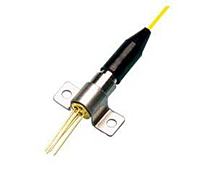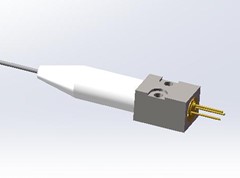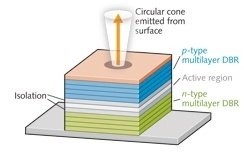RPK520
Fiber Coupled Laser Diode, 520nm
Key Features:
- Up to 5mW CW output power
- 520nm
- 4µm core diameter MM fiber
- 0.13 Numerical Aperture
- Highly efficient
- Highly stable
- Superior beam quality
- Long diode lifetime
There are many configurations and options available. If you do not see exactly what you need below, please contact us!
Need Quantities? Have a question?
POPULAR CONFIGURATIONS:
Picture |
Part Number |
Part Description |
Datasheet |
Price |
Lead Time |
Quantity |
|
|---|---|---|---|---|---|---|---|

|
RPK520-03-0.005W-00413-NA |
Fiber Coupled Laser Diode, Pigtailed , 520 +/-10nm, 5mW, Coaxial Package, 1m long 4um, 0.13NA fiber (No Connector) |
|
$505.90 |
Inquire |
Get Quote |
The RPK Series of multiple, single-emitter fiber-coupled diode lasers are available in wavelengths from 405nm thru 1550nm with up to ≈ 500W output power. Our specialized fiber-coupling techniques ensure high efficiency, stability, and superior beam quality, while rigorous inspections and burn-in procedures guarantee each product’s reliability, stability, and long lifetime. Highly customizable packages allow us to meet our customers’ specific needs, providing high-quality products at reasonable prices.
Benefits:
- Specialized fiber-coupling techniques result in high efficiency, stability, and superior beam quality.
- More precise and accurate results in material processing, medical therapeutics, and solid-state laser media pumping.
- Narrow linewidth output for precision measurement in gas sensing for example.
- Stringent inspecting and burn-in procedures guarantee reliability, stability, and long product lifetime.
- Highly efficient, stable, and long diode lifetime for increased confidence and trust in product performance and longevity.
- Cost-effective solution with minimal maintenance requirements and reduced downtime.
- Complete turn-key option – Easy to use DS3 air-cooled laser diode system option for the RPK Series diode lasers.
- Easy and hassle-free integration for various applications saves you time and money.
- Highly customizable, tailored solutions with different packages to meet customers’ unique needs.
The RPK series of laser diode systems are suitable for a range of applications including material processing, medical therapeutics, and pumping solid-state laser media. With highly efficient and stable performance, superior beam quality, and long diode lifetime, the RPK Series offers a reliable and effective solution for your laser needs.
If you have any questions or need more information, please contact us.
RPMC provides a complete, turn-key laser diode system option for the RPK Series, suitable for material processing, medical therapeutics and pumping solid-state laser media. Delivering up to 200W of diode laser into a 100~400um core fiber, the system makes it easy to develop new applications. The Turn-Key Laser Diode System is available in the following wavelengths: 450nm, 635mn, 660nm, 680nm, 690nm, 793nm, 808nm, 830nm, 9xxnm, 1470nm, 1550nm. Other wavelengths are available upon request. With control over the operating temperature of the diode laser, as well as current and pulse width, the system offers flexibility and an easy-to-use interface. The system can be controlled either by the front panel user interface or by a computer-controlled RS-232 interface.
| Type | |
|---|---|
| Wavelength (nm) | |
| Output power (W) | |
| Mode | |
| Output | |
| Duty | |
| Package |

 SHIPS TODAY
SHIPS TODAY 


